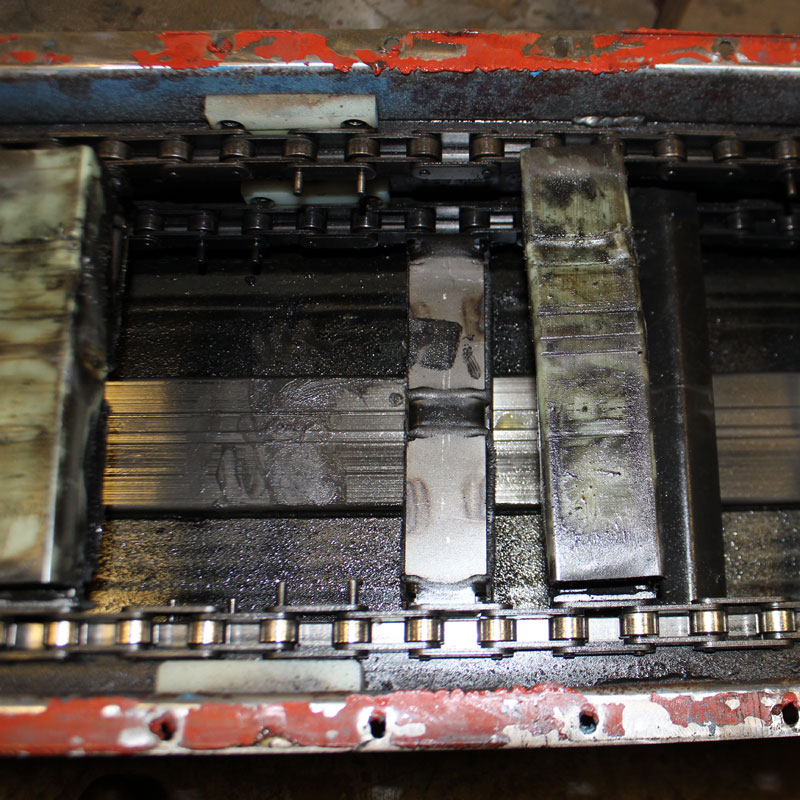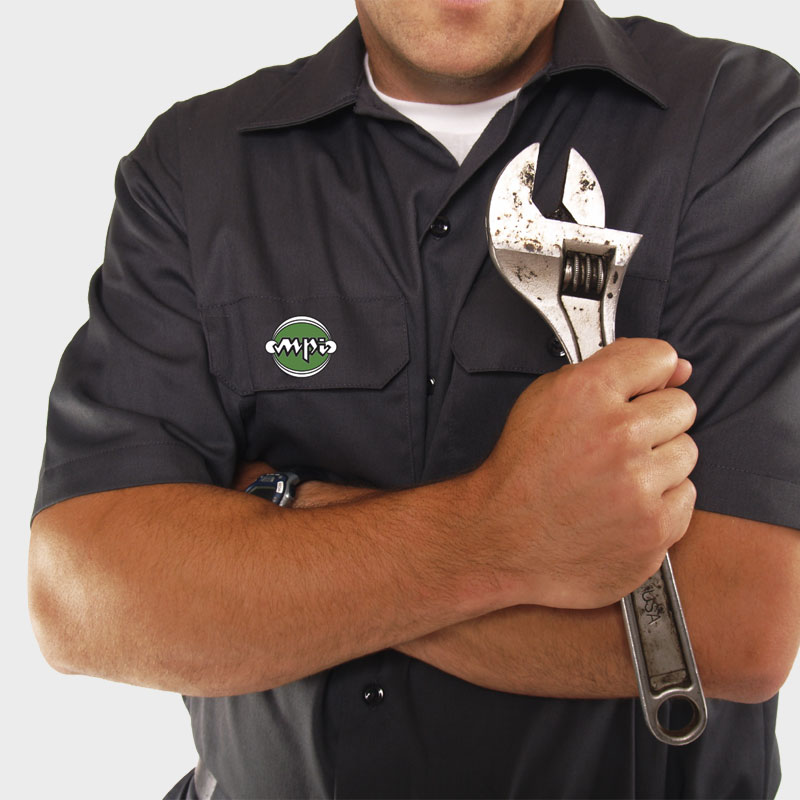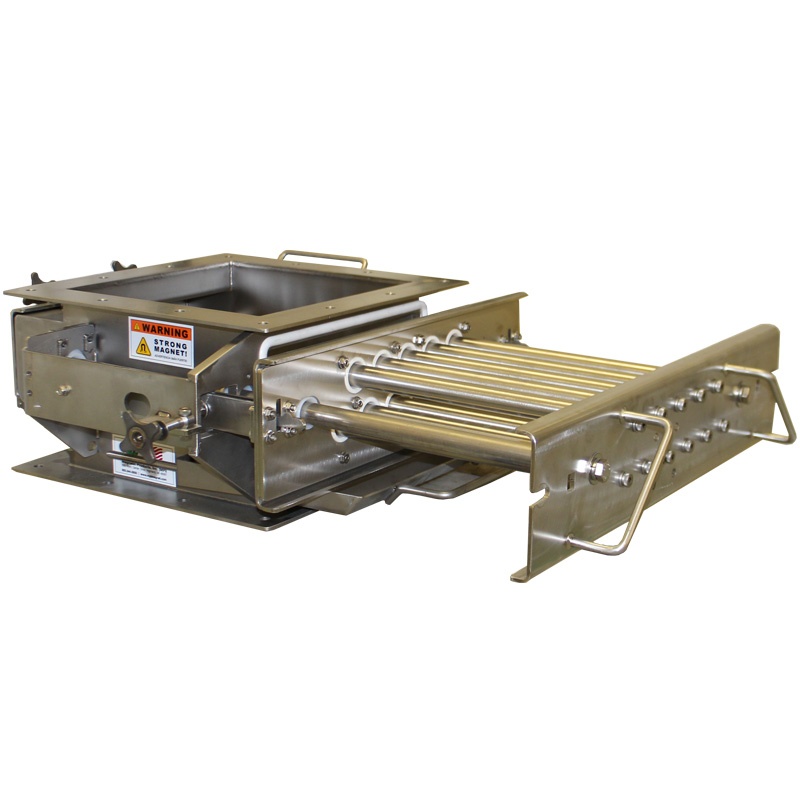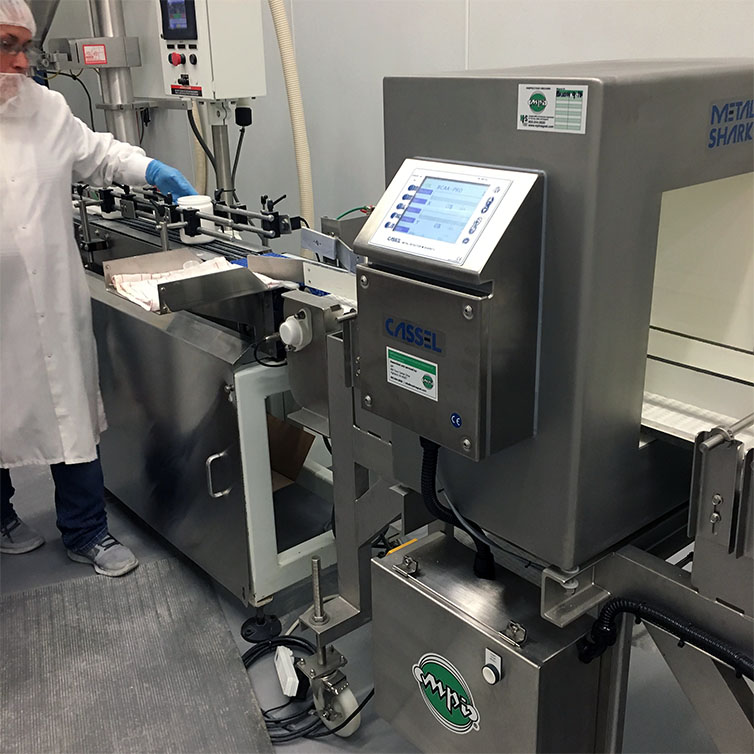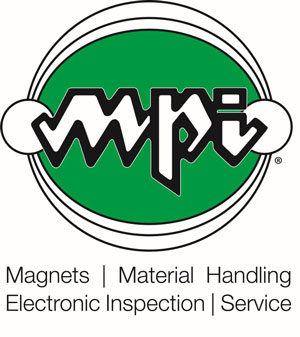Low-Maintenance Scrap Handling Systems Defeat Downtime
Click here to read the original article by Lou Kren, Senior Editor at MetalForming Magazine
The projected ramping up of electric-vehicle (EV) production in coming years has metal formers positioning their operations to add and keep EV contracts. Expect the contract winners to exhibit solid supply chains, flexible and productive press lines, and the ability to deliver what’s needed when it’s needed. Producers of press-line equipment have noticed the uptick in interest from such metal formers. This includes suppliers of scrap and parts conveyors such as Magnetic Products, Inc. (MPI), of Highland, MI, according to Kyle Rhodes, MPI’s vice president of business development. Metal formers should take a closer look at how they handle scrap, he says, regardless of their target markets, as poor scrap handling can drastically cut productivity and crush the bottom line.
Specifically in terms of scrap handling and conveyor use, when should metal formers realize that they can do better?
“Right off the bat, check if production shuts down due to scrap causing issues in the press line,” Rhodes says. “It seems obvious, and it’s amazing that metal formers often overlook scrap-handling problems or sweep them under the rug. It’s red flag number one. Causes could include scrap buildup in the dies, clogs or backups on scrap-handling equipment, or scrap-handling equipment that fails due to maintenance issues.
“These conditions have huge consequences,” he continues. “Scrap costs money, and the last thing a metal former wants is to shut down a stamping press because of the scrap coming off of parts. This is the first thing I look for when I visit a stamping operation, and it should be at the top of a metal former’s list, too.”
Red flag number two? Scrap-handling equipment causing a bottleneck during job changeover, according to Rhodes.
“Metal formers must assess job changeovers,” he explains. “They have many ways to set up presses for changeover, depending on how they handle the parts and the scrap. How long does it take to change out the dies and get a press running again? A big component of changeover involves changing or moving around the scrap-handling equipment, particularly if the scrap moves above ground—forklifts moving hoppers out to empty into scrap bins, relocating hoppers, moving conveyors, etc.”
Modular Components Ease Movement and Replacement
Fortunately, solutions exist for operations that exhibit these red flags. Modular, quick-connect conveyor components and systems provide optimal options for metal formers, Rhodes reports.
“Look for modular designs that allow operators to move equipment by hand without damaging the equipment or hurting themselves, and without the need for forklifts,” he says, noting that such designs may feature casters for eased movement around on the shop floor, along with the use of common components and the ability to link scrap-system components together as needed.
Also, newer, more reliable scrap- and part-handling technology has yielded systems that last much longer and require less maintenance. And, Rhodes explains, should maintenance be required, fixes come more quickly and easily.
“For example, a metal former’s conveying equipment couldn’t remove scrap as quickly as the 2500-ton press produced it, and scrap was backing up in the die,” he says. “Now, press-mounted electric shakers along with steel pans that go between the press uprights shake the scrap out onto a 20-ft.-long, 24-in.-wide conveyor. Linear shaker systems represent a big trend in scrap handling. The solid steel pans hold up much better than steel belts, and these linear shaker systems require much less maintenance. We use shakers wherever we can due to their reliability. And, this modular setup uses four modular motors for four shakers, with eight motors for eight shakers when it’s fully installed. Again, any scrap-handling components on the floor have casters, with pins and clamps providing for quick connect and disconnect on the press and with other components.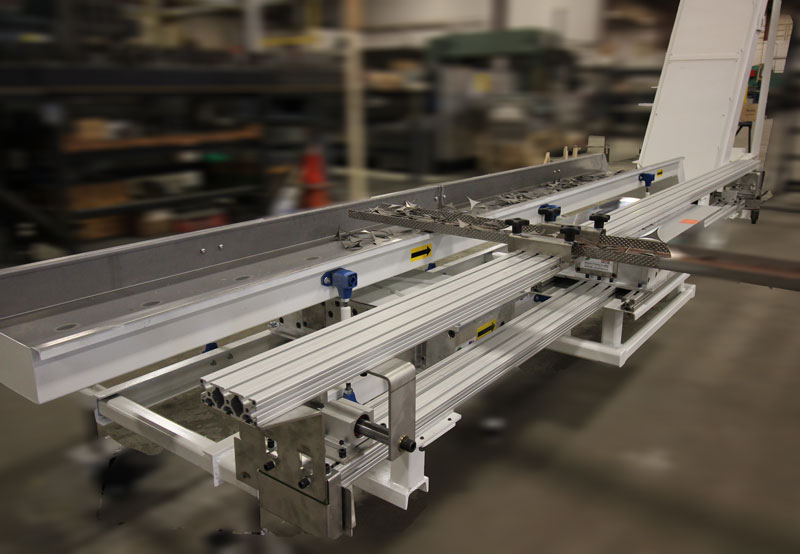
“Perhaps 10 years down the road when something in this system goes down or if a forklift hits it or whatever, because this system is modular, the metal former simply grabs a motor off the shelf, unbolts the failed motor and bolts on the new one,” Rhodes continues. “The scrap-handling system is back online in as little as 20 min. Previously, should a steel-belt conveyor go down, the metal former had to pull it aside, manually remove the scrap, wait for maintenance to fix it or call the manufacturer to get spare parts. Modular systems are a game-changer in terms of uptime and how we think about return on investment (ROI) for scrap-handling systems.”
Also, during job changeover, modular conveyor components simply roll out of the way by hand—no forklift required.
This same example cited by Rhodes offers another conveyor innovation.
“This metal stamper also experienced damaged and dented parts due to stamped parts dropping onto an old part-out conveyor,” he explains. “Different dies drop out parts from different heights, so a new conveyor of maintenance-free design—as compared to the conventional rubber-polyurethane tension belt it replaces—will index up and down to minimize the drop height.”
Big Advantages in Underground Applications
The use of modular, low-maintenance conveyor solutions pays dividends just as large if not larger in underground scrap-handling applications where access can prove challenging. Rhodes offers another example that illustrates such a scenario.
“An automotive supplier experienced weekly downtime due to scrap jamming along a 450-ft. underground line of steel-belt conveyors serving 13 presses,” he says. “The scrap also was damaging the conveyor belts as it filled up the pit. A new shaker system with three cascading steel pans—each from 120 to 180 ft. long with a modular motor—solved the issue. It’s truly maintenance-free save for the grease required in the main drive, but that has a 2-yr. lubrication system, so the metal former only must grease that once every two years when an indicator on the press control alerts the operator. The solid pans mean no jams and no damage, unlike the steel-belt conveyors. Again, modular design means simple component replacement should an issue arise.
“And,” Rhodes continues, “a spare 8-ft.-long drive system onsite allows for replacement in less than 1 hr. Compare that to typically a day of downtime with the old scrap-handling system, or a week’s worth of downtime when something catastrophic occurred. The new system ties into the press controls as well, which assists in maintaining optimal scrap-handling performance.”
Summarizing Rhodes’ thoughts, the bottom line is this: Stay mindful of red flags involving scrap-handling-related downtime as well as excessive downtime at job changeover due to conveyor repositioning. And, know that solutions exist to ease system setups and movement, reduce maintenance and boost ROI.
MPI offers a wide range of scrap handling system products for metal forming companies.



